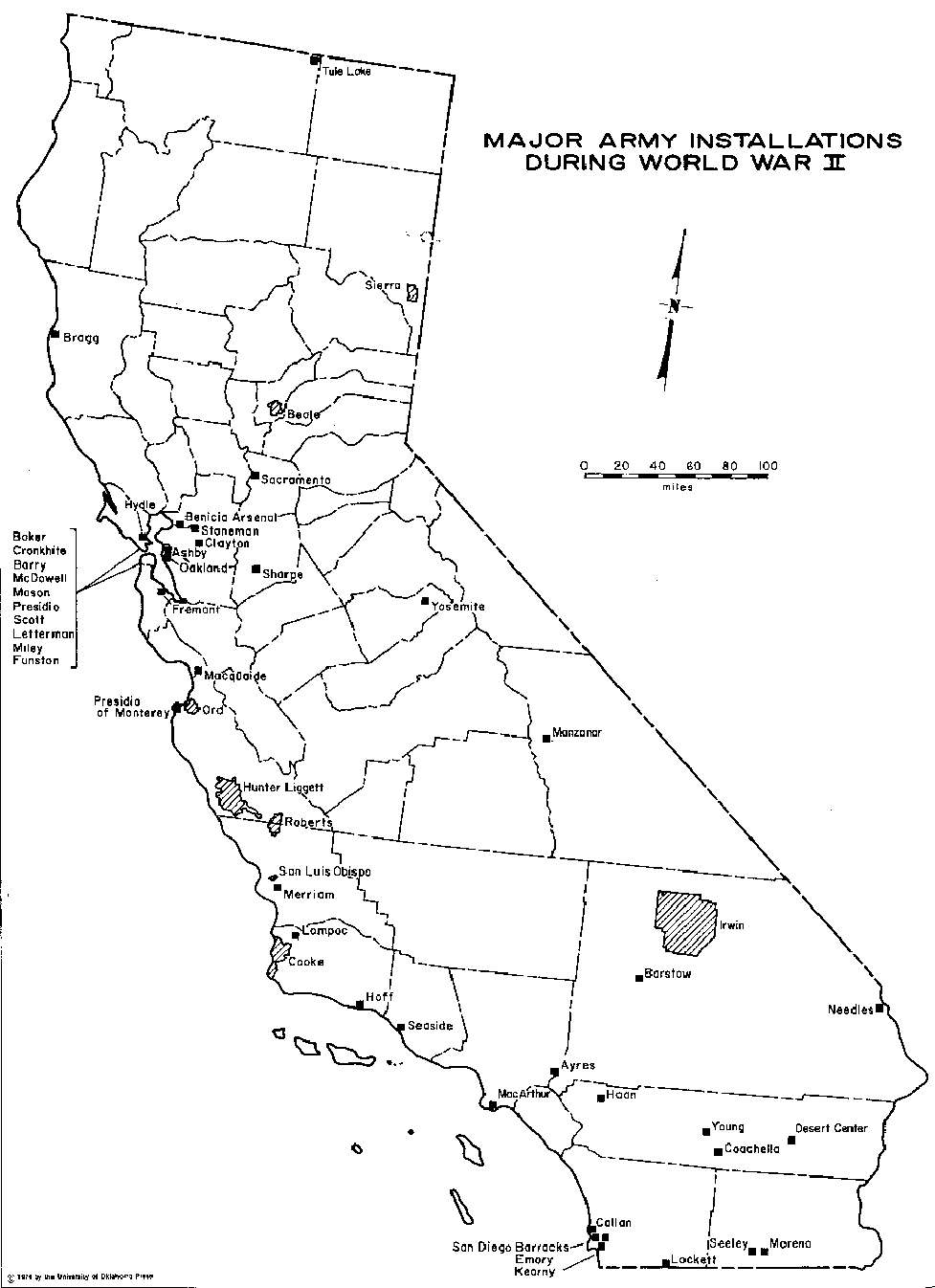
To learn more about California History, we suggest reading
The United State Army used California extensively to train men for both the Atlantic and Pacific theaters. To supply the Asian war there were numerous arsenals, ammunition and supply depots, and ordnance centers such as: the Benicia Arsenal, Oakland Army Terminal, Sacramento Army Depot. Sharpe Army Depot, The Sierra Army Depot, and Yermo Depot (near Barstow).
Old established installations were greatly expanded to meet wartime demands. Included were these in the San Diego area: San Diego Barracks. Fort Emory, Camp Kearny, and Fort Rosecrans, some of which dated back to the Mexican War era. Camp Callan, near La Jolla, is a World War II facility. Fort MacArthur was commissioned in 1917 to guard Los Angeles harbor, but was on or near the site of earlier military facilities. Named after General Arthur MacArthur, it was originally a coast artillery post. The large number of military centers around San Francisco, some of which date from Spanish days, attest to the importance of that area. They include Forts Baker, Cronkhite, Barry, McDowell (on Angel Island), Mason, the Presidio. Scott, Letterman General Hospital, Miley, and Funston. World War II training centers include the following camps: Hydle, Stoneman, Clayton, Ashby, and Fremont.
One of the largest training centers was located at Fort Ord. Sub-posts of Ord include the temporary facilities at Camp MacQuaide, the venerable Presidio of Monterey, the Hunter Liggett Military Reservation (until 1940 a part of the William Randolph Hearst ranch), and Camp Roberts. Farther south, Camp San Luis Obispo, which had been activated as a national guard camp in 1928 as Camp Merriam, was greatly expanded as an infantry division training center. Camp Cooke wal also a nearby training post. Hoff General Hospital, in Santa Barbara, was one of the leading army hospitals in the state. Camp Beale, with 86,488 acres was one of the larger training camps.
A basic reason why California had such a large concentration of army installations during World War II was the large amount of sparsely occupied land which could be purchased or leased for minimum fees. Geographic conditions also made it possible to prepare troops for desert combat, mountain climbing, or test survival techniques in snow and cold. Camp Irwin (now Fort Irwin) includes some of the most rugged and difficult terrain of the Mojave Desert among its 1,000 square miles. Originally used as an anti-aircraft range, it housed such distinguished units as the "Desert Commandos." It was (and still is), the best training ground for armored units in the United States. Camp Young (near Indio), occupied land similar to that of Fort Irwin, and was the nucleus of the far-flung Desert Training Center. Most important in this complex were camps at Coachella and Needles. General George S. Patton, Jr. used the 162,000 square miles of this center to prepare his armored units for their fabled exploits in North Africa. Camps Seeley, Morena, and Lockett were also desert training facilities. Camp Haan, near March Field, was an infantry training center which also utilized rugged terrain.
Other army facilities included the Manzanar and Tule Lake Evacuee Reception Centers used to house the Japanese internees. Camp Ayres (near Chino), and Fort Bragg were used as prisoner of war encampments.
